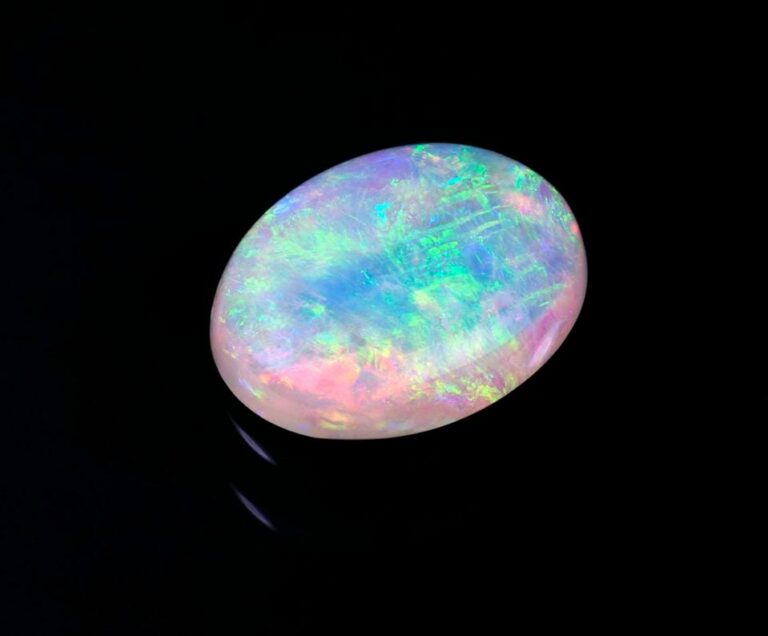NASA Rover Discovers Gemstone On Mars
A study team was able to independently confirm that fracture halos included opal, on Earth a gemstone created by the modification of silica by water, by utilizing new techniques to evaluate data from NASA’s Curiosity, a rover operating on Mars since 2012.

According to the study, the extensive subterranean fracture networks may have created environments that were more hospitable than those on the surface.
In order to investigate Gale Crater, a sizable impact basin with a gigantic, stratified mountain in the center, NASA deployed the Curiosity rover to Mars in 2012. Researchers have found light-toned rocks around cracks that crisscross certain regions of the Martian terrain, occasionally reaching far into the horizon of rover imagery, as Curiosity has traveled over the surface of Mars. According to recent research, Gale Crater’s vast halo networks were one of, if not the final, water-rich ecosystems throughout the modern period. When circumstances on the surface were likely considerably harsher, this water-rich ecosystem in the subsurface would have also afforded better livable conditions.

Archival data from a number of instruments were examined as part of a recent study that was published in the Journal of Geophysical Research: Planets. The study was led by Travis Gabriel, a former Arizona State University NewSpace Postdoctoral Fellow who is currently a research physicist for the U.S. government. The Curiosity rover accidentally crossed one of these fracture halos many years ago, before Gabriel and co-author and graduate student at ASU Sean Czarnecki were ever a part of the rover team.
They noticed a vast area of fracture halos reaching into the distance when they looked at the old pictures. The study team discovered something intriguing by using fresh techniques for assessing instrument data. These halos had a lot of silica and water in them, which was comparable to halos discovered much later in the expedition in quite other rock units.
According to Gabriel, “our recent review of historical data revealed startling resemblance between all of the fracture halos we’ve discovered much later in the expedition.” It was amazing to see how numerous and possibly opal-rich these fracture networks were.
Many years into the expedition, scientists established that these light-toned rocks were quite distinctive in comparison to anything the crew had seen before by examining drill cores retrieved at the Buckskin and Greenhorn drill sites.
In addition to reviewing historical data, Gabriel and his team looked for chances to revisit their previous studies of these light-toned rocks. Gabriel oversaw a focused measuring effort utilizing the rover’s equipment after they arrived at the Lubango drill site, a bright-toned fracture halo, confirming the composition’s opal richness.

Opal may develop in situations where silica is in solution with water, a process analogous to dissolving sugar or salt in water. This makes the finding of opal remarkable. It starts to sink to the bottom if there is too much salt present or if the weather conditions change. On Earth, silica may develop in hot springs and geysers and can tumble out of solution in locations like lake and ocean bottoms, conditions somewhat like Yellowstone National Park.
These underground networks of fractures may have been far more hospitable than the hard surface conditions of the contemporary Mars, which is what scientists believe this opal in Gale Crater developed in.
It’s plausible to assume that these potentially livable subsurface conditions extended to many other sections of Gale Crater as well, and maybe in other regions of Mars, Gabriel added, given the extensive fracture networks seen in Gale Crater. These ecosystems would have developed long after Gale Crater’s prehistoric waters dried up.
Future astronauts will benefit from the discovery of opal on Mars, and exploratory endeavors might benefit from the abundance of water there. Silica and water, with a water concentration of 3 to 21% by weight, make up the majority of the material that makes up opal, with trace amounts of other impurities like iron. This implies that the opal will release its water if it is heated and ground up. Gabriel and other Curiosity rover researchers previously proved this precise procedure. These tough minerals might be a valuable resource for upcoming research efforts elsewhere on Mars, especially in light of mounting satellite data showing that opal is present there as well.
Material provided by the Arizona State University.
Do not forget to share your opinion with us to provide you with the best posts !




0 Comments